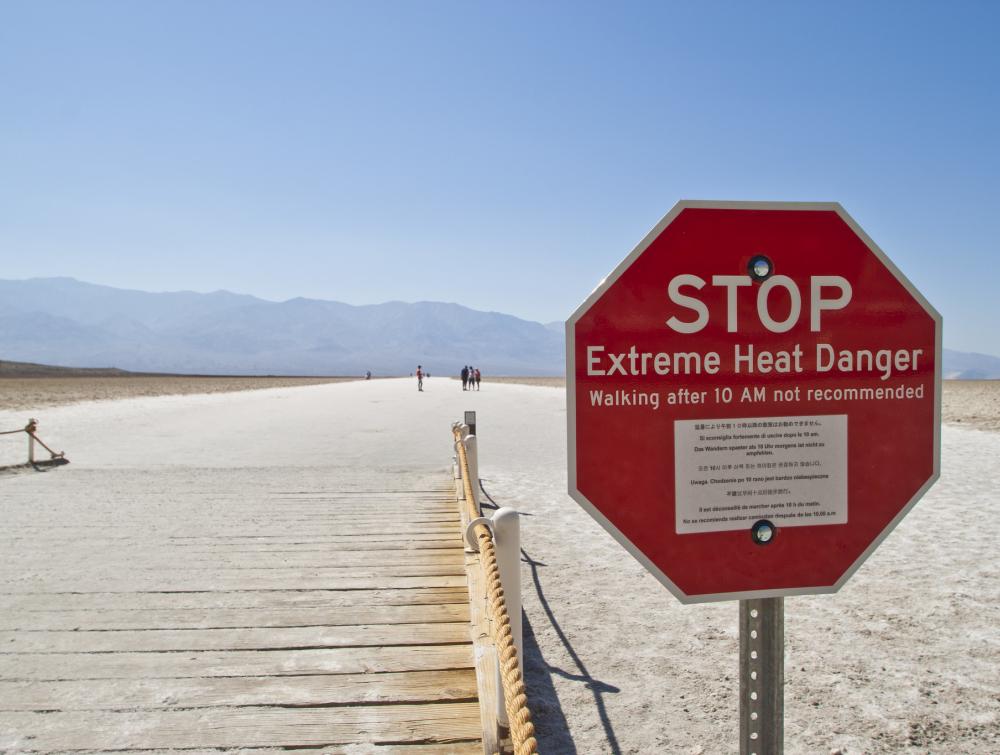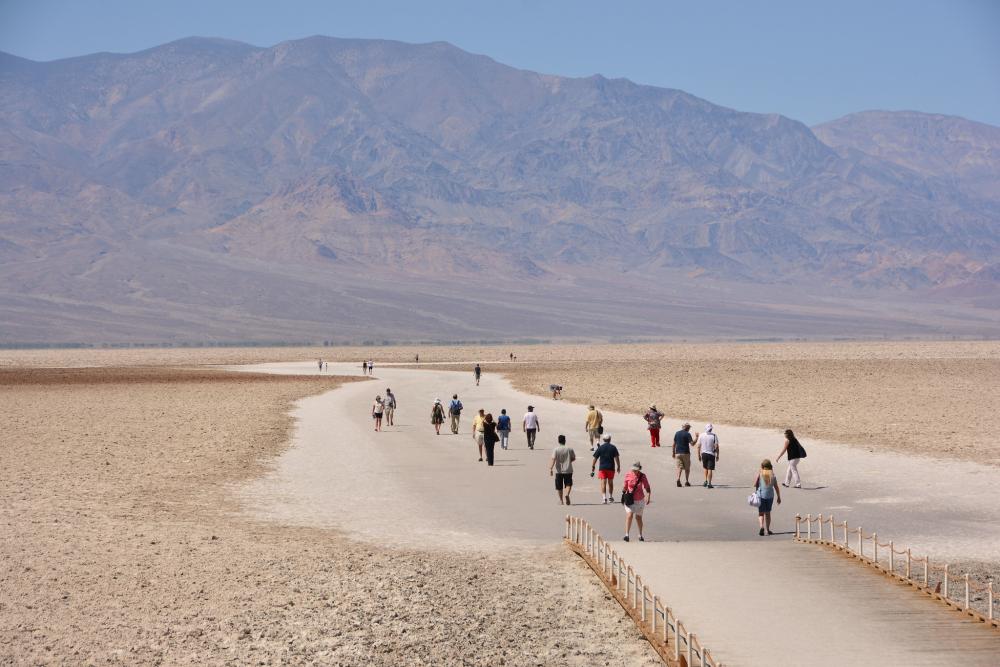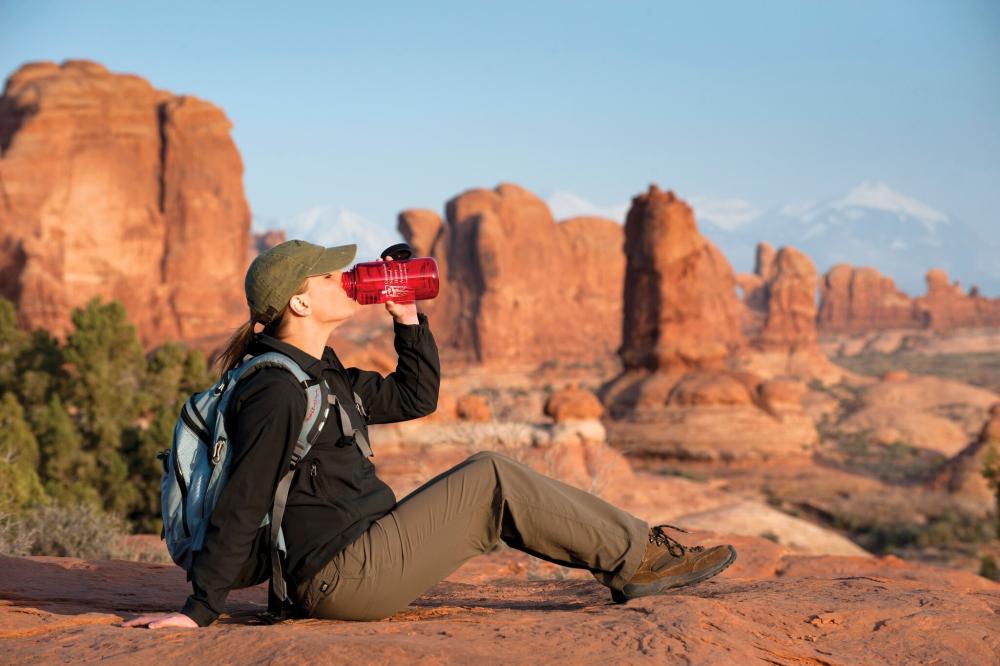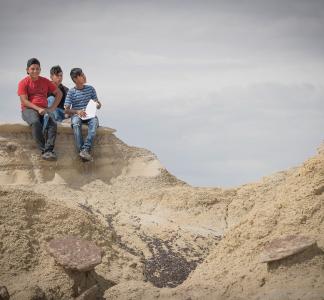8 tips for staying safe in the heat at parks and public lands

Death Valley is known as the hottest place on earth, with summer temperatures often topping 120°F.
Graeme Maclean, Flickr
Summers are getting hotter, protect yourself against heat-related illnesses
Have you been complaining about how unbearably hot the past few summers have been feeling? You're not alone—and you’re not imagining things. The summer of 2023 set records as the hottest in many parts of the United States and globally. Now, it seems the summer of 2024 is well on its way to joining it as one of the hottest ever.
With each degree rise in temperature, the likelihood of extreme weather events such as heatwaves, wildfires, severe storms and hurricanes increases. The hotter it gets, the more vulnerable we become to these threats, underscoring the urgent need for proactive climate action and resilience planning at all levels.
But for right now people want to get out and enjoy national parks, wildlife refuges, forests and other public lands and waters. Summer is a time for families, friends and people to reconnect with nature and each other. However, recent tragedies like the motorcyclist's death in Death Valley serve as stark reminders of the dangers posed by extreme heat. To prevent more such tragedies, it's crucial to take precautions when spending time outdoors.

Visitors walking at Death Valley National Park, where temperatures can get as high as 120 degrees.
Mike McBey, Flickr
So, if you are planning on going outside to hike, fish, camp, birdwatch (or do anything, really), here are some tips to help you protect yourself from extreme heat and heat-related illnesses.
-
Plan ahead and pack accordingly.
Before heading outdoors, familiarize yourself with heat-related illnesses and what to do if someone experiences symptoms. Check the weather forecast and conditions of the park or area you plan to visit. Pack plenty of water, snacks, sunscreen and any necessary medications. Consider bringing a first aid kit and a charged cell phone for emergencies.
-
Consider your skills and limits.
Choose activities that match your experience and fitness levels to avoid over-exertion. Consider any medical conditions, as they could be exacerbated by the extreme heat.
-
Stay hydrated.
Always bring a water bottle (preferably a reusable one). Drink plenty of water throughout the day, even if you don't feel thirsty. According to the CDC, people should drink 1 cup (8 ounces) of water every 15–20 minutes. If you forget your water bottle, find where to access drinking water as soon as you can.
-
Dress appropriately.
Wear lightweight, light-colored and loose-fitting clothing to help your body regulate its temperature. Bring a hat and sunglasses to provide additional protection.
-
Time your outdoor activities and seek shade.
Start your activity during the colder times of the day, like early morning (before 10 am) or evening (after 4 pm). Whenever possible, stay in shaded areas, especially during those hot parts of the day.
-
Don’t skip your sunscreen!
Apply sunscreen with a high SPF (30 or higher) all over your body and face. Bring it with you so you can keep reapplying regularly, especially if you're sweating or swimming.
-
Listen to your body, take plenty of breaks.
Rest if you start feeling overheated. If possible, try to take those frequent breaks in shaded or air-conditioned areas.
-
Cool down and (if you can) get wet.
Use cool towels, misting fans or, if a body of water is available, consider completely soaking yourself to cool off your body and lessen the effects of heat. If you do jump on a river or lake, make sure you follow the “no swimming” or “no wading” signs.

Don't forget to bring a water bottle and drink throughout the day!
NPS
If the heat becomes too intense, consider modifying your outdoor plans or finding indoor activities until temperatures cool down. You can also choose to go to a museum, nature exhibition, or an interpretive center instead. Check out park websites before heading outdoors, they can break down outdoor vs indoor activities for you.
Stay safe!



